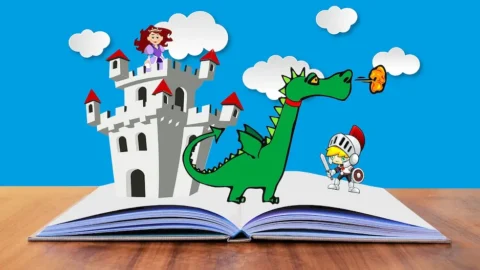What is a genre in TEFL?
In English language teaching, a genre is a text type (spoken or written) which has a distinctive form and content and which is socio-culturally recognisable.
What are some examples of genres in TEFL?
Have a look at these two texts:
| Once upon a time there lived a little girl in the middle of the forest. She was the most beautiful little girl in the whole world and everyone who saw her wanted to marry her. |
| It was a bright cold day in April, and the clocks were striking thirteen. Winston Smith, his chin nuzzled into his breast in an effort to escape the vile wind, slipped quickly through the glass doors of Victory Mansions, though not quickly enough to prevent a swirl of gritty dust from entering along with him. |
The first text is socio-culturally recognisable as the beginning of a fairy story, because:
- It uses certain fixed phrases (“Once upon a time…”)
- It uses “extreme” language (“the most beautiful” not “a beautiful”; “everyone”)
- It is written in a particular font
- It makes use of decontextualised narrative (“there lived…”)
- It talks about things in general terms (“in the middle of the forest”)
The second text, on the other hand, is identifiable as a novel, because:
- It is full of descriptive language and lists of adjectives which, although unnecessary for adding meaning, add colour and make the writing more evocative.
- It contains long sentences, with a lot of subsidiary clauses (compare this to the fairy story).
How can we recognise a genre?
We can recognise the genre of a written or spoken text from many different features, including:
- style and register
- complexity and use of different grammatical features
- the length of the text
- the speed with which the text is delivered (spoken texts)
- the layout (use of headings, sections, etc.)
- intended audience
Can we work on genre in the TEFL classroom?
Classroom activities to analyse genre in this way can help learners understand texts by using top-down processing. It can also help when it comes to production. Writing a letter of complaint, for example, requires an awareness of the features of that genre, which are completely different from the features of an informal email.
Spoken genre
We can often identify spoken genres in terms of moves. The process of ordering a drink at a bar, for example, has a set of clearly defined moves, and may go something like this:
| Offering help | What can I get you? | |
| ↓ | ↓ | |
| Requesting a product | A pint and a coke, please. | |
| ↓ | ↓ | |
| Requesting clarification | Ice and lemon in the coke? | |
| ↓ | ↓ | |
| Giving clarification | Yes please. | |
| ↓ | ↓ | |
| Requesting payment | That’s 3 pounds 80 please. | |
| ↓ | ↓ | |
| Expressing gratitude | Thanks. |
The number and likely sequences of moves, and the range, style and register of likely language is fairly limited, making this a particularly strong spoken genre. Using flow charts in this way can therefore be very useful for learners to recognise the organisational structure of an interaction in a particular genre, and to see where a particular piece of language fits in to the overall interaction.







